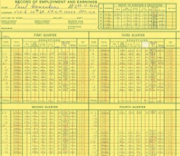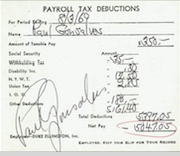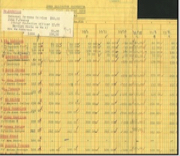Paul Gonsalves
By Arthur Luby
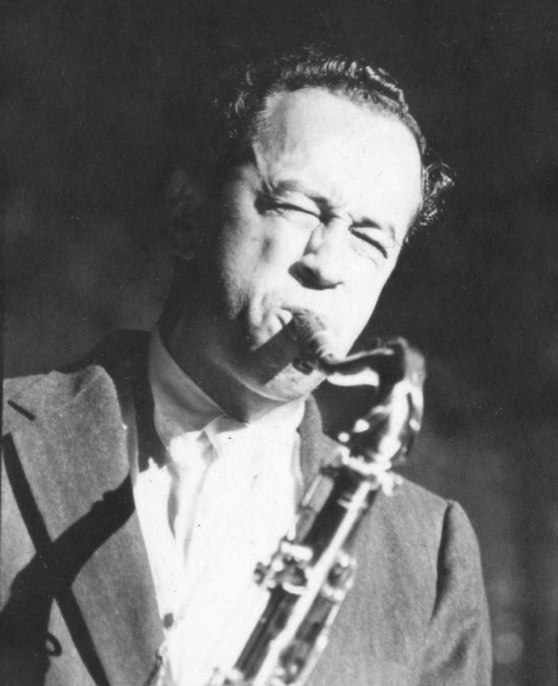
Gonsalves was born on July 12, 1920 in Brockton, Massachusetts to Cape Verdean immigrants. His family moved to Pawtucket, Rhode Island, a city which, to this day, retains the largest concentration of citizens of Cape Verdean descent in the United States. Cape Verdeans had well established musical traditions which were brought to the United States and Gonsalves' father taught he and his brothers to play the guitar. Together they formed a group which played Cape Verdean or Crioulo styled music. However, in his mid-teens Paul went with his older brother to see the Jimmie Lunceford Orchestra in downtown Providence. He was taken with the playing of alto saxophonist Willie Smith – one of Lunceford's primary soloists who later played with Gonsalves in Ellington's orchestra – and was inspired to take up the saxophone. He went home to, in his words as provided to Stanley Dance, “worry my father” about buying a saxophone, a strategy which his sister Julia recalled amounted to walking around the house puzzling his parents by pantomiming playing a saxophone until one of his friends told them what it was about. His father responded by buying his son a used melody C tenor saxophone for fifty nine dollars and insisted he repay him a dollar a week until the debt was paid off.
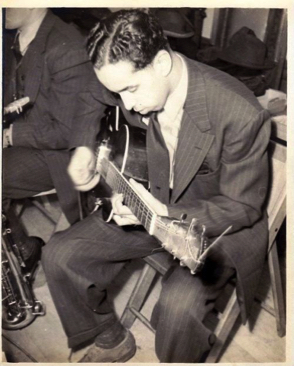
A few years later Gonsalves auditioned for and became a student of Joseph Piagetelli at the Boston Conservatory who, in recognition of his talent, made him pay only a nominal fee for lessons. After three years Piagetelli informed his student that there was no more he could teach him and sent him to the outside world, a world in which big band jazz music occupied a singular place in popular culture that would be lost in less than a generation. Inspired by his teacher and the active jazz scene of Southern New England, Gonsalves rejected a scholarship in commercial art at the Rhode Island School of Design to pursue a career with his saxophone.
Gonsalves first break into the world of the big bands was with the Phil Edmund Orchestra, followed by bands fronted by Duke Oliver, and Henry McCoy. These groups were dance bands based in New Bedford, which were dominated by musicians of Cape Verdean descent. Edmund, in particular, took considerable pride in his affiliation with Paul, and years later he gathered his alumni together to record an album of Cape Verdean music. The album features a magnificent solo by Gonsalves on a number entitled “Song of Paul” which exhibits the lengthy runs and unique phrasing which made his name with the Ellington Orchestra.
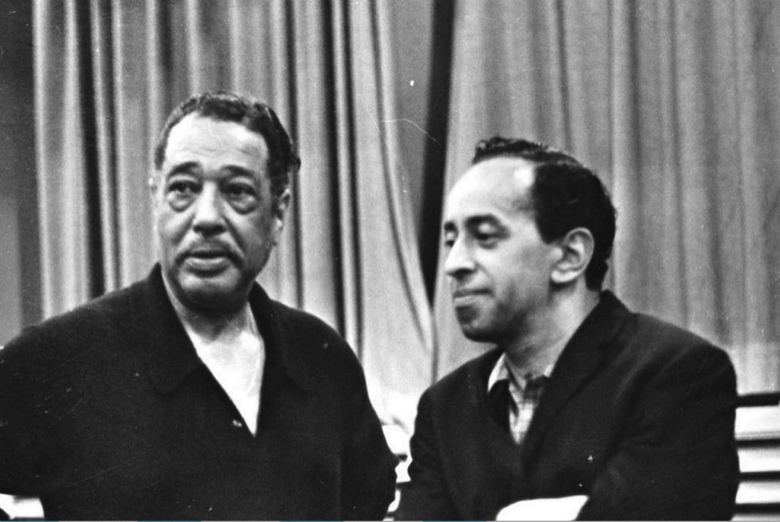
Gonsalves' career was interrupted by World War II during which he served in the Quartermaster Corp in India and Burma, but also had the chance to maintain his musicianship by jamming frequently with Virginia born pianist Teddy Weatherford in Calcutta. Upon his return home he took a seat in the Sabby Lewis band, a superb hard swinging group based in Boston. His broad tone and swing – influenced in equal measure by Coleman Hawkins and Ben Webster -- drew the notice of the Count Basie who recruited Gonsalves as a replacement for Illinois Jacquet. Gonsalves also inherited “Mutton Leg”, one of Jacquet's famous gut bucket numbers which he made into an equally successful and crowd pleasing vehicle. When the deteriorating economics of big band jazz led Basie to reduce his personnel, Gonsalves was let go. He managed to secure a chair in Dizzy Gillespie's big band, a group with a style and book far less compatible with Gonsalves' musical strengths. Nevertheless, he soon established a role in the band and, after a time, was given the bulk of the reed solo work. Unfortunately, the same cultural changes which took most black and white big bands off the road in the post war era impacted even the hip and innovative Gillespie and he disbanded his group in 1950. This left Gonsalves stranded in New York with rapidly diminishing finances.
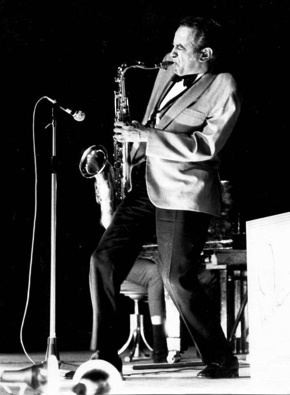
Gonsalves recalled to Stanley Dance that by the fall of 1950 he was down to his last seven dollars when he journeyed from his apartment in midtown Manhattan to Birdland where, either by luck or design, he ran into Duke Ellington. Ellington was aware of his playing and asked him to come to his office the next day. He was quickly hired and, with that, a twenty four year musical and personal relationship was initiated which was broken only by Paul's odd three week stint with the Tommy Dorsey Orchestra in 1954.
The typical narrative of the years leading up to the Orchestra's triumph at Newport in 1956 is that the band was in a state of financial and creative decline and was “saved” at Newport. Ellington himself contributed to this impression through his oft repeated remark that he was “born” at Newport. Still, there is considerable reason to question this account. While the Ellington Orchestra was certainly impaired by the difficult business environment of the early fifties as well as the departure of the great alto saxophonist Johnny Hodges, it retained a devoted following and produced several great albums in the pre-Newport era, including “Masterpieces by Ellington” and “Ellington Uptown”. There were many successful tours during this time frame and audiences reacted strongly to the new vitality and creativity brought by Gonsalves and the brilliant St Louis born bop trumpeter, Clark Terry. And in the lead up to Newport the band gained momentum with the return of Hodges as well as several successful concerts in which Gonsalves experimented with the tenor solo bridge inserted into “Diminuendo and Crescendo”.
By the time it reached Rhode Island in early July of 1956 this new version of the Orchestra was coming into its own and Ellington had every reason to hope for a break out performance. This effort was, no doubt, complicated by the decision of the concert organizers to split the Orchestra's performance into two sets, the latter commencing after midnight. Nevertheless, the band retained its enthusiasm into the late night set and Ellington, who was well aware that Gonsalves was less than an hour from his home and on the friendliest possible turf, called for “Diminuendo and Crescendo in Blue” between sets and told his soloist that it was his night. And Gonsalves, urged on by dozens of friends and family including fellow Cape Verdean musicians, delivered an inspired performance which still retains its surpassing energy and power after decades of replay and examination.
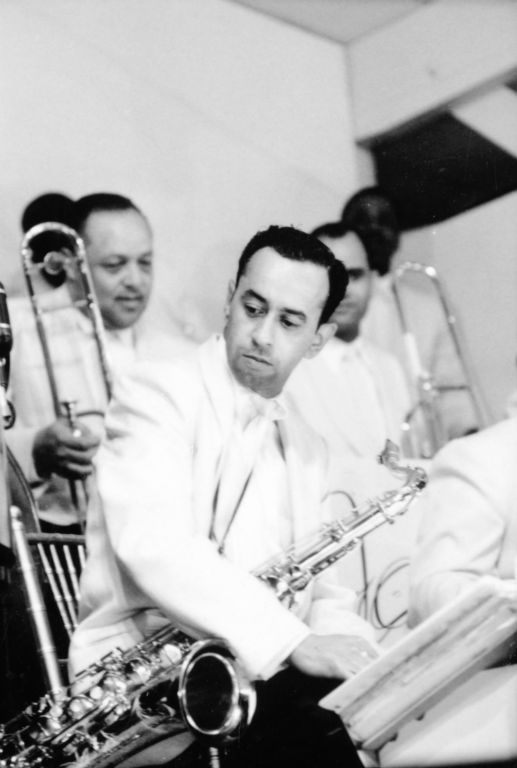
Newport ushered in a new and successful period for Ellington and his Orchestra, but the trajectory of Gonsalves' life and career was more problematic. The album “Ellington at Newport” was immensely popular (and remains the Orchestra's best- selling release) and, because of this, Gonsalves was called upon to take the long physically taxing bridge solo night after night. When the demand for the number played out Gonsalves was assigned several derivative solos, such as “Ready go”, or “Blow by Blow”. However, as he aged, and the long term impact of narcotic and alcohol addiction took hold, the hard driving multiple chorus swing numbers became more difficult to perform and were gradually removed from his repertoire.
Regrettably, Gonsalves' substance abuse issues are an unavoidable part of his biography, both because of the impact on his health and playing and the fact that – notwithstanding Ellington's best efforts—it was a poorly kept secret among the band's followers. It is not clear where or when Gonsalves became an addict, but in the years immediately after World War II organized crime inundated major American cities with heroin and, in that era, use of narcotics was often taken as a sign of hipness among jazz musicians and their followers with tragic personal consequences. Whatever the origin of the addiction, as the years wore on the instances of Gonsalves fading off on or leaving the bandstand piled up and were so notorious that critic Martin Williams complained about Ellington's poor judgment in keeping a musician “as brilliant, but erratic” as Gonsalves in his liner notes to the Smithsonian's collection of recorded jazz. And British critic Derek Jewell, who greatly appreciated Gonsalves' talents, also wrote of his “evil” looking friends, who were obviously dealers. These issues were all the more notable because they were in stark contrast to Gonsalves' friendly almost innocent demeanor. He was deeply sentimental about family and fellow musicians and, throughout his career, commanded intense loyalty from other members of the Orchestra and even Ellington.
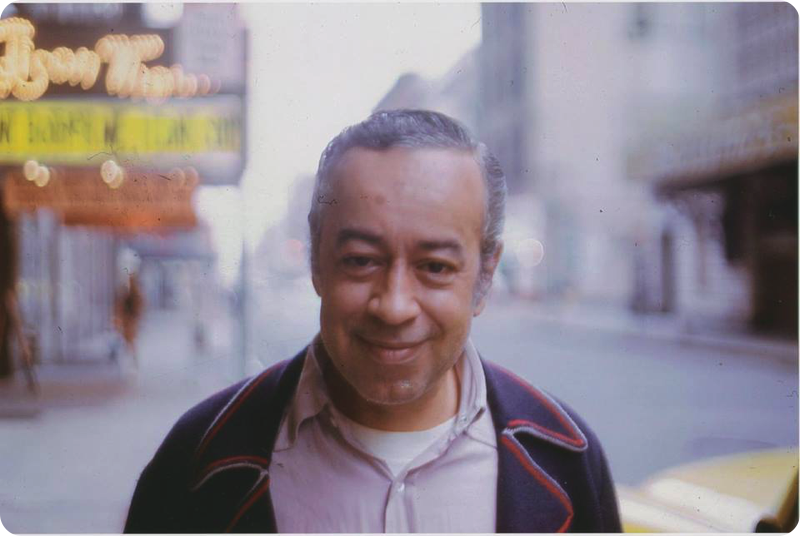
In his last decade, and in the face of poor health and waning prowess, Gonsalves still managed to fashion memorable solos, particularly ballads. This includes superb versions of “Chelsea Bridge”, “Happy Reunion”, and “Mount Harrissa” (from the Far East Suite) and even “Heaven”, a number from the Second Sacred Concert first played by Johnny Hodges, which Ellington took to assigning Gonsalves in their final months on the road. Both were likely aware that time was running out and for Gonsalves, as noted by his daughter Colette, life outside of the special world of the Ellington Orchestra was unthinkable.
Paul Gonsalves is buried at the Long Island National Cemetry, New York, Plot 2N 3731.
Biographical Notes
When the first iteration of this website was uploaded, there was next to nothing about Paul Gonsalves online. The internet has grown exponentially since that time and more and more snippets of information can be found on the web. This section will act as a repository of these bits and bobs as and when then are found.
Addresses

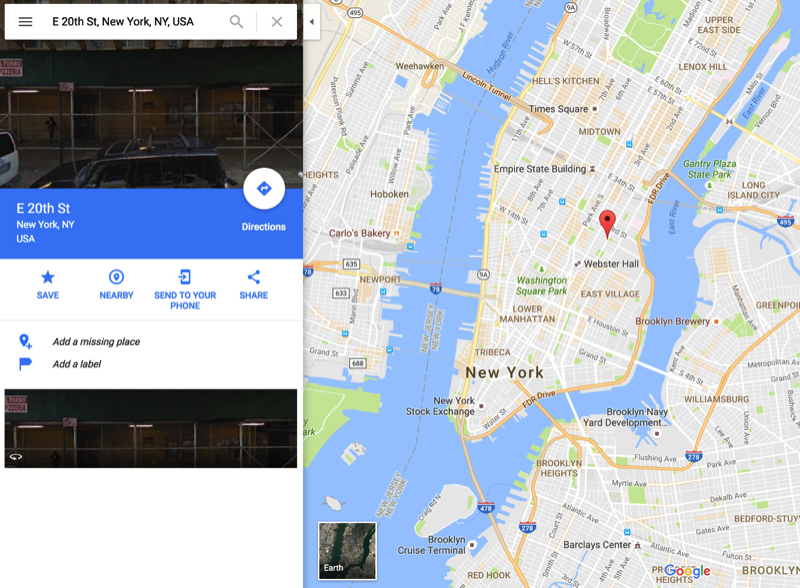
Online census records have yielded where Paul was living in the 30's (top) and 70s (bottom).
Army Enlistment
Paul was a WWII veteran, serving in quatermasters corp and rising to sergeant. Showing left is the record of his enlistment in 1942.
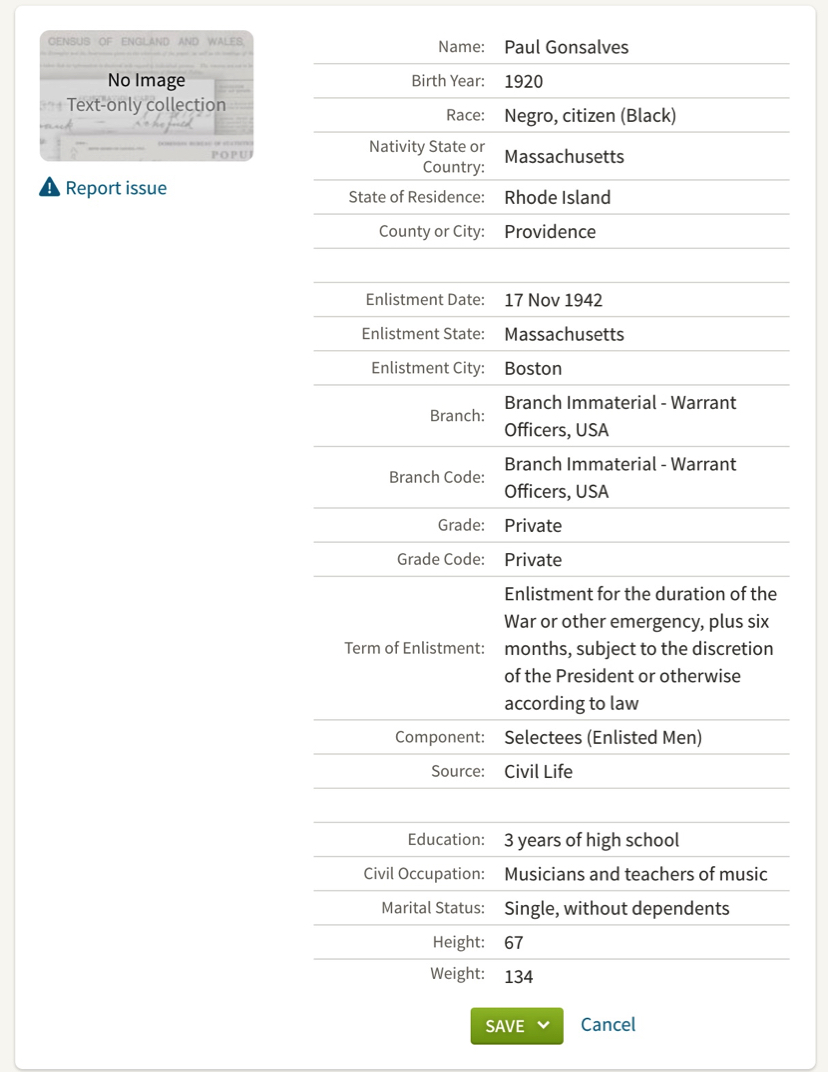
The Smithsonian Ellington Collection
A fasinating range of documents are available via the Smithsonian Foundation, including interestnig financial records.
The thumbnails to the left link to three examples of this type of record, with particular reference to Paul Gonsalves. The first shows how much money the band members were sending home to thier families during their State Department tour in 1963. The second is a break down of Paul's earnings in 1972. The last is a payroll tax deductions sip for the week ending 8/3/69. That week Paul made $350 (equivalent to roughly $2400 in todays dollars!). It is intersting, though rather sad, to note that it still left Paul over $5000 in debt to his employer.

Made in RapidWeaver
